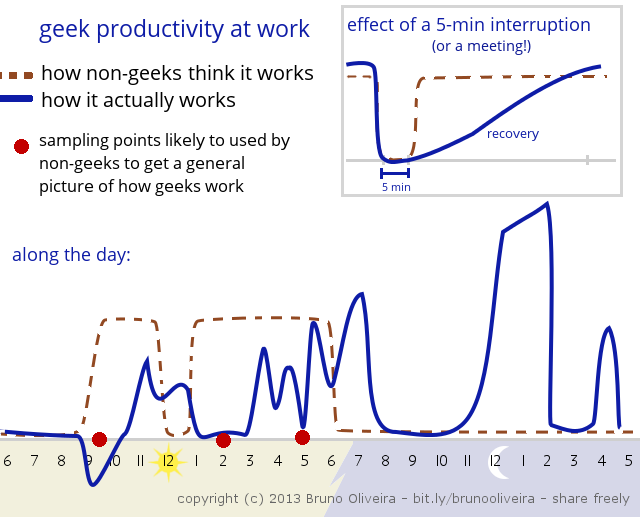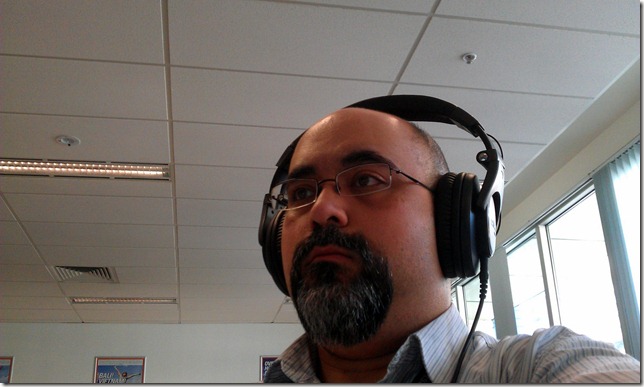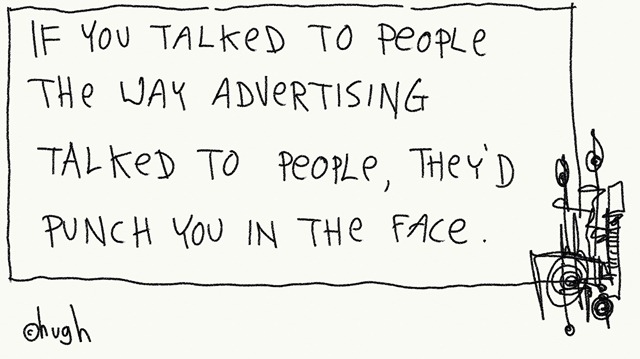Dark Horse Analytics are back with the third instalment of their 'Data Looks Better Naked' series. This time they're improving the pie chart:
Source: 'Salvaging the Pie'
I don't quite agree with their conclusion because pie charts are a useful communications tool when you want to communicate simple part-to-whole relationships without having to talk through the numbers.
Using charts to tell a quick story
For example, I find pie charts useful when showing the proportion of men vs women in a particular sample set. Or the results of a series of yes/no questions.
Take a look at these pie and bar charts:
If I was going to use these charts to tell a story during a presentation, I'd much rather put those pie charts up on the screen and say something like: "Most people voted 'yes' in Question 1; about two-thirds voted 'yes' in Question 2; but a little under half voted 'yes' in Question 3". That explanation wouldn't work as well if I had used the bar charts, instead.
On the other hand, if I had wanted to talk about the actual number of yes-vs-no votes cast for each question (or their percentage values), then I'd use the bar charts.
Of course if I wasn't going to show this on a big screen at all, but was instead including the results in a written report, then I might not even use charts. I might just put all those numbers in a table.
Communicating a rough sense of the numbers
The other situation in which pie charts are useful to me is when I want to communicate approximate results for a slightly larger data series but, again, without having to talk about the actual numbers.
For example, every Tuesday at work I email around a social media activity report that tells my colleagues how we did on our various social media channels over the previous week. One of the charts I include in my report is a Twitter sentiment pie chart for various geographical regions. This chart gives you an idea of how people felt about us on Twitter over the previous week.
The thing is: the people I send this report to don't particularly care whether 15% or 20% of people expressed excitement about our brand on Twitter last week. They really just want an approximate sense of how things went. They want to be able to say "a lot of people were positive about us on Twitter last week" or "people didn't like us very much on Twitter last week." And the pie charts I get from Hootsuite (one of the social media management tools we use) helps them reach that single-sentence conclusion pretty quickly.
Here are the Twitter sentiment charts for three of the regions we keep an eye on. The 3-D pie chart plus data table combo in the top row is what we get from Hootsuite (and is what I include in my reports). Below that I've converted this data into stacked 100% column charts and into bar charts:
Each of these charts tells a slightly different story. The pie chart plus data table combo is nice because you can quickly look at the charts and think: "Okay, not too much dark red or dark green for Region 1; so a mostly average week there. Quite a bit of orange, but no dark red, for Region 2; so people were unhappy, but not angry. And plenty of dark red and dark green for Region 3; which suggests some people were very happy but some people were very upset. And I know that last week we had a great sale but a bunch of flight delays in Region 3 so this result makes sense."
The stacked column charts help you tell a similar story but, in my opinion, it's harder to judge the proportion of one colour to the whole in this type of chart so you're forced to look at the numbers to give you additional context. So you'd look at Region 3's chart and think: "Okay, 24+8 = 28%, so a little over quarter of the people were unhappy. And 21+12 = 33%, so about a third were happy." But now you're stuck comparing 33% green to 28% red instead of just getting a sense of what people thought, and then moving on.
The bar chart at the bottom does possibly the best job of comparing one colour/sentiment with another - but what you're missing here is the relative proportion of that colour compared to the whole. So, for example, you'd look at the Region 2 chart and think: "Okay, light orange is the highest bar so a lot of people were unhappy with us." But then you'd have to add 42% and 17% to see that about half the people were unhappy (though not angry) last week. You could reach that same conclusion with a single glance at the pie chart which shows that it's about half light+dark orange.
In my opinion the pie chart plus data table combo works best. If you just want to get a feeling for the data you only need to look at the pie chart and get a sense of the colour spread. But, if you want to dive deeper it's easy to move on to the table and add the numbers to do a more detailed analysis.
But no other pie chart use
Those are the only two situations in which I use pie charts. In most other situations I'm showing a data trend (as opposed to a snapshot) or a larger series of values - both of which require a different kind of explanation and, therefore, a different kind of chart.
So what I'd recommend is that, if you're ever not sure about which chart type to use, just chart your data in multiple different ways and then try use each type to tell your story. The one that works best (i.e. tells the best story, is the easiest to explain, and has the least chance of being misinterpreted) is the one you should go with. And if this happens to be a pie chart, then so be it.










